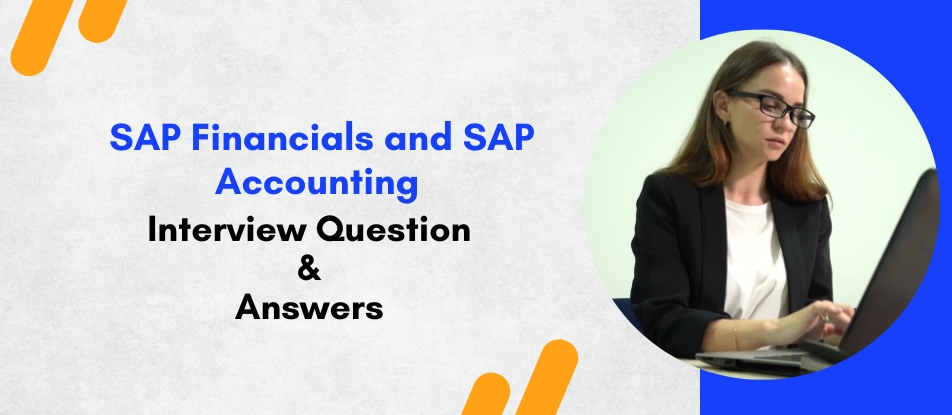
This SAP Financials and SAP Accounting course provides in-depth training on managing core financial functions using SAP ERP. It covers essential modules such as General Ledger, Financial Reporting, Asset Management, and Sub-ledger Accounting. Learners gain hands-on experience in configuring and executing financial transactions, supporting compliance, audit readiness, and strategic decision-making. The course is ideal for accountants, finance analysts, and SAP consultants aiming to master enterprise-level financial operations.
SAP Financials and SAP Accounting Training Interview Questions Answers - For Intermediate
1. What is the difference between a G/L account and a reconciliation account in SAP?
A G/L (General Ledger) account is used to record financial transactions in SAP. A reconciliation account, on the other hand, acts as a control account for sub-ledgers like customers and vendors. While you post directly to G/L accounts, reconciliation accounts are updated indirectly via sub-ledger postings, ensuring consistency and integration.
2. What is a field status group in SAP?
A field status group controls the data entry fields during posting to G/L accounts. It defines whether a field should be required, optional, suppressed, or displayed. This ensures accurate and relevant data entry aligned with business needs.
3. Explain the concept of open item management in SAP.
Open item management enables tracking of outstanding transactions like unpaid invoices or unreceived payments. It is typically used for accounts like customers, vendors, and bank clearing accounts, where matching of debit and credit entries is necessary.
4. What is a special G/L transaction?
Special G/L transactions are financial postings that differ from normal postings, such as down payments, bills of exchange, and guarantees. They are managed using special indicators and are linked to reconciliation accounts to maintain integration with the G/L.
5. What is the purpose of SAP Controlling (CO) module and how does it relate to FI?
SAP CO supports internal cost tracking and management. While FI handles external reporting, CO focuses on internal cost control and profitability. Both modules are integrated—FI captures actual transactions, and CO uses that data for cost analysis and planning.
6. How is revenue recognized in SAP FI?
Revenue recognition involves posting earned revenue during the period in which it was realized, not necessarily when payment is received. SAP supports revenue recognition through accrual/deferral methods and specific transactions based on configuration and account types.
7. What is the difference between residual payment and partial payment in SAP?
In residual payment, the open item is cleared and a new item is created for the remaining amount. In partial payment, both the original and the partial payment remain open. Residual payments are often preferred for clearer tracking.
8. What is GR/IR clearing account in SAP?
The GR/IR (Goods Receipt/Invoice Receipt) account is a temporary clearing account used in the procurement process. When goods are received, the GR/IR account is credited, and when the invoice is received, it is debited, clearing the temporary balance.
9. What is a posting period, and how is it controlled in SAP?
A posting period defines the time frame during which transactions can be recorded. SAP controls this using the posting period variant, which specifies open periods for each company code, ensuring proper period-end closing and audit control.
10. What is document splitting and its benefits in SAP?
Document splitting is used in new GL to create detailed financial statements for segments or profit centers. It automatically splits entries across dimensions, helping companies comply with legal and management reporting requirements.
11. What is a substitution and validation in SAP FI?
Substitutions automatically change field values during document posting, while validations check the integrity of data based on user-defined rules. These helps maintain data consistency and enforce business rules.
12. What is parallel accounting and how is it configured in SAP?
Parallel accounting enables a company to prepare financial statements according to multiple accounting standards (e.g., local GAAP and IFRS). It’s configured using multiple ledgers, account determination, and version management in the new General Ledger.
13. How are interest calculations handled in SAP FI?
SAP allows automatic calculation of interest on overdue receivables or payables. You define interest indicators, calculation methods, and terms, and the system can then generate interest documents and reports.
14. What is the purpose of ledger groups in SAP?
Ledger groups allow companies to post and manage financial entries in multiple ledgers simultaneously. This supports parallel accounting, enabling organizations to meet different reporting and statutory requirements efficiently.
15. What are the steps involved in the financial closing process in SAP?
The financial closing process includes tasks like opening/closing periods, posting accruals, running depreciation, foreign currency valuation, reconciling sub-ledgers, and generating financial statements. SAP supports these with automation and monitoring tools like the Financial Closing Cockpit.
SAP Financials and SAP Accounting Training Interview Questions Answers - For Advanced
1. How do you implement parallel accounting using ledger approach in SAP S/4HANA?
In SAP S/4HANA, parallel accounting is implemented using the ledger approach by creating additional ledgers within the Universal Journal (ACDOCA). The leading ledger (typically 0L) is used for local GAAP, and one or more non-leading ledgers are created to support alternative accounting standards like IFRS or US GAAP. These ledgers can post independently using separate accounting principles. Document splitting, valuation differences, and depreciation areas can be configured per ledger to reflect standard-specific treatment. Posting rules and ledger groups ensure that postings are directed appropriately. This approach simplifies multi-GAAP reporting and allows simultaneous financial statement generation for all accounting frameworks without duplicating transactions.
2. What are the benefits and challenges of using Central Finance in SAP S/4HANA?
SAP Central Finance enables organizations to consolidate financial data from multiple source systems into a single S/4HANA system. Benefits include real-time financial reporting, centralized planning, and faster period-end closing. It supports harmonization of master data and processes across business units. However, challenges include data replication latency, master data alignment (cost centers, chart of accounts), and ensuring consistent mapping logic. Central Finance also requires integration with SLT (SAP Landscape Transformation) for real-time data replication and complex configuration for AIF (Application Interface Framework) to monitor replication errors. It is ideal for enterprises undergoing finance transformation with diverse landscapes.
3. Explain how SAP manages intercompany postings and eliminations in group reporting.
Intercompany postings are managed through automated postings in SAP FI where one company code books a transaction that is mirrored by another. In group reporting (S/4HANA), intercompany eliminations are handled using Consolidation Units (CUs) and Consolidation Groups (CGs). The system identifies matching intercompany transactions based on partner entities and eliminates them using defined rules. SAP performs currency translation and maps accounts appropriately before eliminations. Consolidation monitors provide visibility into matched/unmatched items, and eliminations can be automated or adjusted manually. This ensures accurate group-level reporting free of internal profit and balances.
4. How is financial planning integrated into SAP S/4HANA Finance and Analytics Cloud?
Financial planning is tightly integrated with SAP S/4HANA Finance through embedded analytics and its seamless interface with SAP Analytics Cloud (SAC). Actuals from the Universal Journal (ACDOCA) flow into SAC for planning, budgeting, and forecasting. Users can create predictive models, simulations, and driver-based planning using live data. Integration ensures that planning and operational reporting use the same data model, avoiding reconciliation issues. Embedded planning functions like allocations, distributions, and currency conversion align plans with actuals, enabling real-time strategy execution and variance analysis.
5. What is predictive accounting in SAP S/4HANA and how does it help financial decision-making?
Predictive accounting is a forward-looking capability in SAP S/4HANA that records anticipated financial transactions before they occur in the real world. For example, when a sales order is created, the system predicts future revenue and cost of goods sold entries. These entries are posted to special extension ledgers and not to the actual G/L. This helps in forecasting profitability, revenue trends, and cash flows in real time. Finance leaders benefit from early insight into business outcomes, enabling quicker adjustments to strategy and resource allocation.
6. Describe the configuration and use of Automatic Account Determination in SAP.
Automatic Account Determination in SAP ensures that accounting entries are posted to the correct G/L accounts without manual intervention. Configuration is done via transaction OBYC, where valuation classes, movement types, and account keys are mapped to G/L accounts. In SD and MM, this ensures seamless integration with FI during goods movements, invoice postings, and pricing conditions. It reduces errors and supports compliance by enforcing consistent posting rules across transactions. Proper setup of valuation areas, material types, and chart of accounts is crucial to its success.
7. What is the purpose of Ledger Groups and how are they used in postings?
Ledger Groups in SAP are collections of ledgers that allow selective postings and reporting. When posting a transaction, users can specify a ledger group to determine which ledgers it will impact. For instance, certain entries (like adjustments for IFRS) may be relevant only to a non-leading ledger. Ledger groups enhance flexibility by supporting multiple accounting principles and enable accurate parallel reporting. In reporting scenarios, they allow financial statements to be generated by specific ledger combinations to meet regional compliance needs.
8. How does SAP ensure compliance with SOX and internal audit requirements?
SAP ensures Sarbanes-Oxley (SOX) compliance through role-based access control, segregation of duties (SoD), audit trails, and workflow approvals. Tools like SAP GRC Access Control monitor user activities, flag violations, and enforce preventive controls. The change log mechanism records all modifications to critical financial data. Workflow approvals for journal entries, master data changes, and payments ensure proper review before processing. Reports and dashboards provide transparency for internal and external auditors, ensuring that financial controls and procedures are documented and followed.
9. Explain the concept of Margin Analysis (Account-Based COPA) in S/4HANA.
Margin Analysis, the successor to Costing-Based COPA, is account-based and directly integrated with the Universal Journal. Unlike the classic approach, it uses G/L accounts for profitability tracking, improving reconciliation with financial accounting. It captures revenue, cost of sales, and variances at a granular level along with dimensions like customer, product, and segment. Margin Analysis supports real-time reporting, embedded analytics, and predictive capabilities. It simplifies data models, ensures consistency across ledgers, and reduces reconciliation efforts, making it ideal for modern profitability analysis.
10. What are derived financial hierarchies and how do they improve reporting in SAP?
Derived financial hierarchies are logical groupings of financial data created dynamically based on attributes in master data or transactional data. In SAP, these hierarchies are used for reporting and planning in tools like SAP Analytics Cloud or S/4HANA embedded analytics. For example, a hierarchy could group G/L accounts by nature (revenue, expense), or cost centers by region. Derived hierarchies improve flexibility and eliminate hard-coded structures, allowing business users to adapt reporting views based on current needs without reconfiguring the system.
11. How does SAP handle reclassification and revaluation during financial close?
Reclassification and revaluation in SAP ensure that assets, liabilities, and financial instruments reflect their correct value at period-end. Reclassification involves adjusting the presentation of balances (e.g., short-term to long-term liabilities), while revaluation adjusts foreign currency balances using the latest exchange rates. SAP provides standard programs (e.g., FAGL_FC_VAL) and configuration options to automate these adjustments. Valuation areas and posting rules determine how and where entries are made. These processes ensure compliance with accounting standards and accuracy in financial statements.
12. Describe the role of Document Types and Number Ranges in controlling financial document flow.
Document Types in SAP define the nature of financial transactions (e.g., KR for vendor invoice, SA for general entry) and control settings like posting keys, reversal document types, and allowed account types. Number Ranges ensure that each document has a unique ID for tracking and auditing. By assigning document types and number ranges per company code or business process, organizations can maintain traceability, enforce posting discipline, and comply with internal control policies. These also support segregation of responsibilities and simplify error tracing during audits.
13. What is the role of the SAP Business Partner concept in Financial Accounting?
The Business Partner (BP) concept in S/4HANA replaces traditional customer/vendor master data structures with a unified approach. A Business Partner can simultaneously function as a customer, vendor, or employee, with role-based extensions. This streamlines master data management, reduces duplication, and aligns with modern data governance practices. In Financial Accounting, this model ensures that all subledger postings are tied to a centralized entity, improving data consistency across AR, AP, and Treasury modules.
14. How do you perform a year-end closing in SAP Financials?
Year-end closing in SAP involves several structured activities including closing open periods, executing foreign currency valuation, posting accruals, running depreciation, performing intercompany reconciliations, and clearing open items. Once all operational postings are complete, G/L balances are carried forward using transaction F.16, and asset balances are carried forward using AJRW. SAP Financial Closing Cockpit or Schedule Manager can be used to monitor and automate this process. After closing, financial statements and audit reports are generated to complete statutory obligations.
15. How does SAP enable ESG (Environmental, Social, and Governance) financial disclosures?
SAP enables ESG disclosures through tools like SAP Sustainability Control Tower, SAP EHS, and integration with SAP Financials. Organizations can track carbon emissions, energy consumption, and social KPIs by linking them with cost centers, projects, and business activities in the financial system. SAP also supports tagging and classification of expenses related to ESG initiatives, enabling transparent and auditable sustainability reporting. With real-time dashboards and integration with global standards (GRI, SASB), SAP empowers finance teams to embed ESG into strategic planning and regulatory compliance.
Course Schedule
| Nov, 2025 | Weekdays | Mon-Fri | Enquire Now |
| Weekend | Sat-Sun | Enquire Now | |
| Dec, 2025 | Weekdays | Mon-Fri | Enquire Now |
| Weekend | Sat-Sun | Enquire Now |
Related Courses
Related Articles
Related Interview
Related FAQ's
- Instructor-led Live Online Interactive Training
- Project Based Customized Learning
- Fast Track Training Program
- Self-paced learning
- In one-on-one training, you have the flexibility to choose the days, timings, and duration according to your preferences.
- We create a personalized training calendar based on your chosen schedule.
- Complete Live Online Interactive Training of the Course
- After Training Recorded Videos
- Session-wise Learning Material and notes for lifetime
- Practical & Assignments exercises
- Global Course Completion Certificate
- 24x7 after Training Support


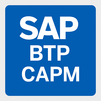
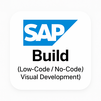

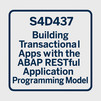

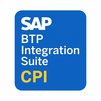
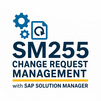


 Join our Live Instructor-Led online classes delivered by industry experts
Join our Live Instructor-Led online classes delivered by industry experts